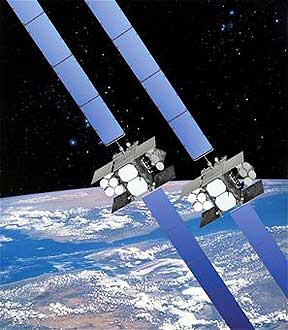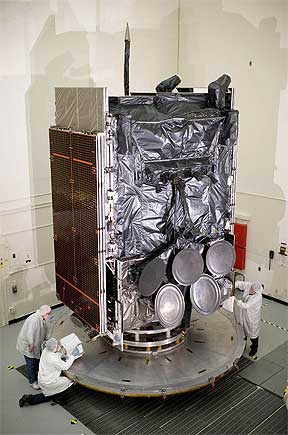U.S.A.F. + Boeing... A Nod To A Mod (Satellites)

Artistic rendition of WGS satellites,
courtesy of Space and Missile Center, Los Angeles Air Force Base.
...to Boeing Space and Intelligence Systems. The contract is for the development and production of an enhanced payload channelizer for Wideband Global Satellite Program’s eighth and ninth satellites. This enhancement nearly doubles communications bandwidth on each satellite which will be available to worldwide U.S. and Allied military forces.

WGS satellite in the Block 2 series.
Photo courtesy of Boeing.
Recognizing the maturity of the
WGS production program, U.S.
AFSPC’s
Space and Missile Systems Center MILSATCOM Directorate is procuring
WGS-7,
8 and
9 under a new commercial-like operating model that resulted in a savings to the U.S. government of several hundred million dollars. The MILSATCOM Directorate was able to leverage some of these savings for use as a
Space Modernization Initiative to improve WGS capability by inserting a new generation of integrated circuits into the payload channelizer. Completion of this effort will enable the enhanced channelizer to be incorporated into all future WGS satellites—a 90 percent improvement in satellite bandwidth—without additional cost to the government.
WGS-1,
2 and
3 are operational and in geosynchronous orbit providing wideband communications to warfighters around the globe.
WGS-4 was launched in January and is being readied for operations.
WGS-5 through
9 are currently in production, with
WGS-5 and
WGS-6 scheduled for launch in 2013.
Wideband Global SATCOM provides anytime, anywhere communication for warfighters through broadcast, multicast and point-to-point connections. WGS is the only system that can support simultaneous X- and Ka-band communications. The WGS cross-banding capability makes communicating across terminal types transparent to its users. WGS currently collects and routes real-time data through more than 700 X-band, 3,100 Ka-band and 400 X/Ka-band terminals in all theaters of operation.
Topical Tags :
Regional Tags :



